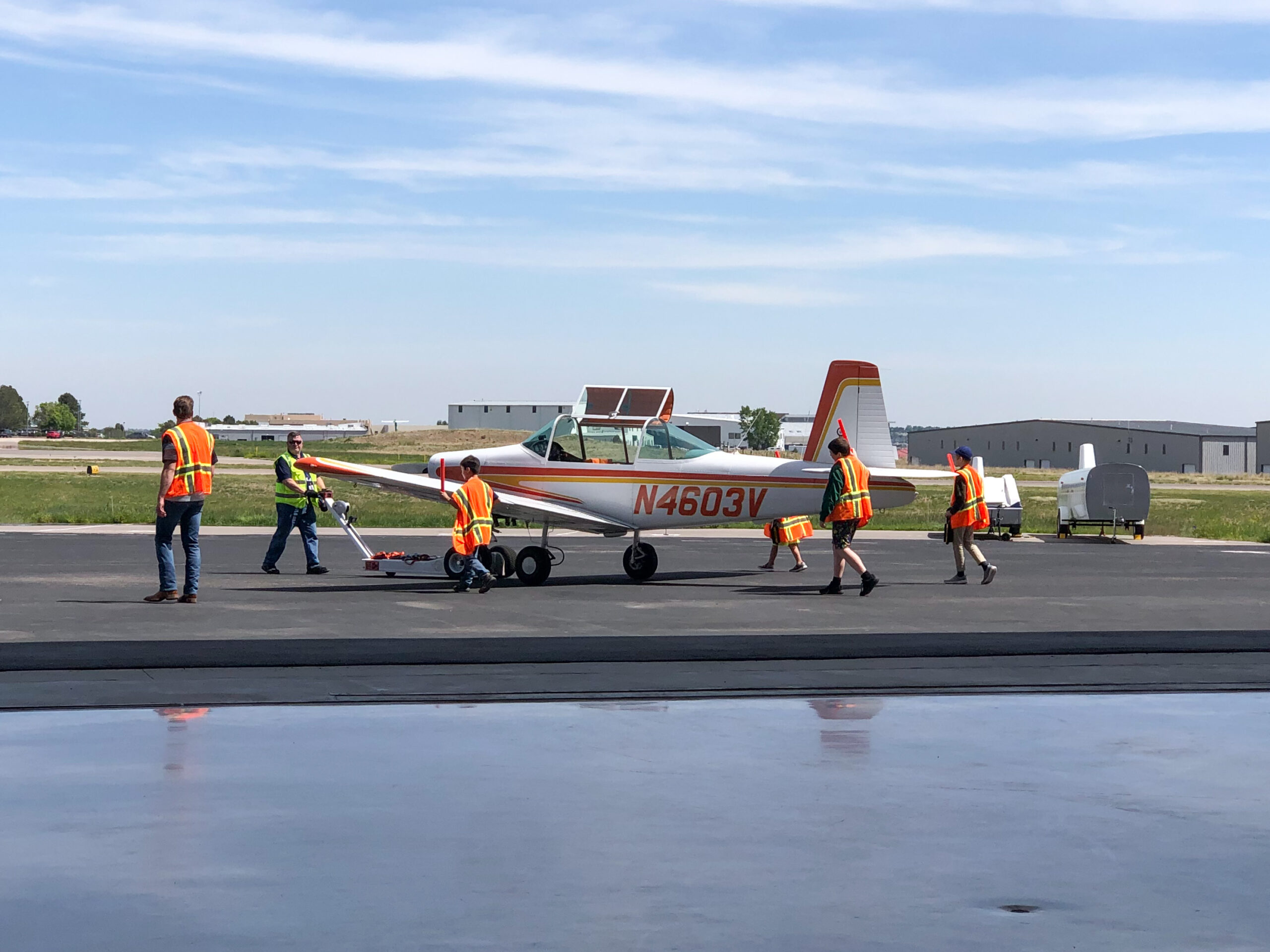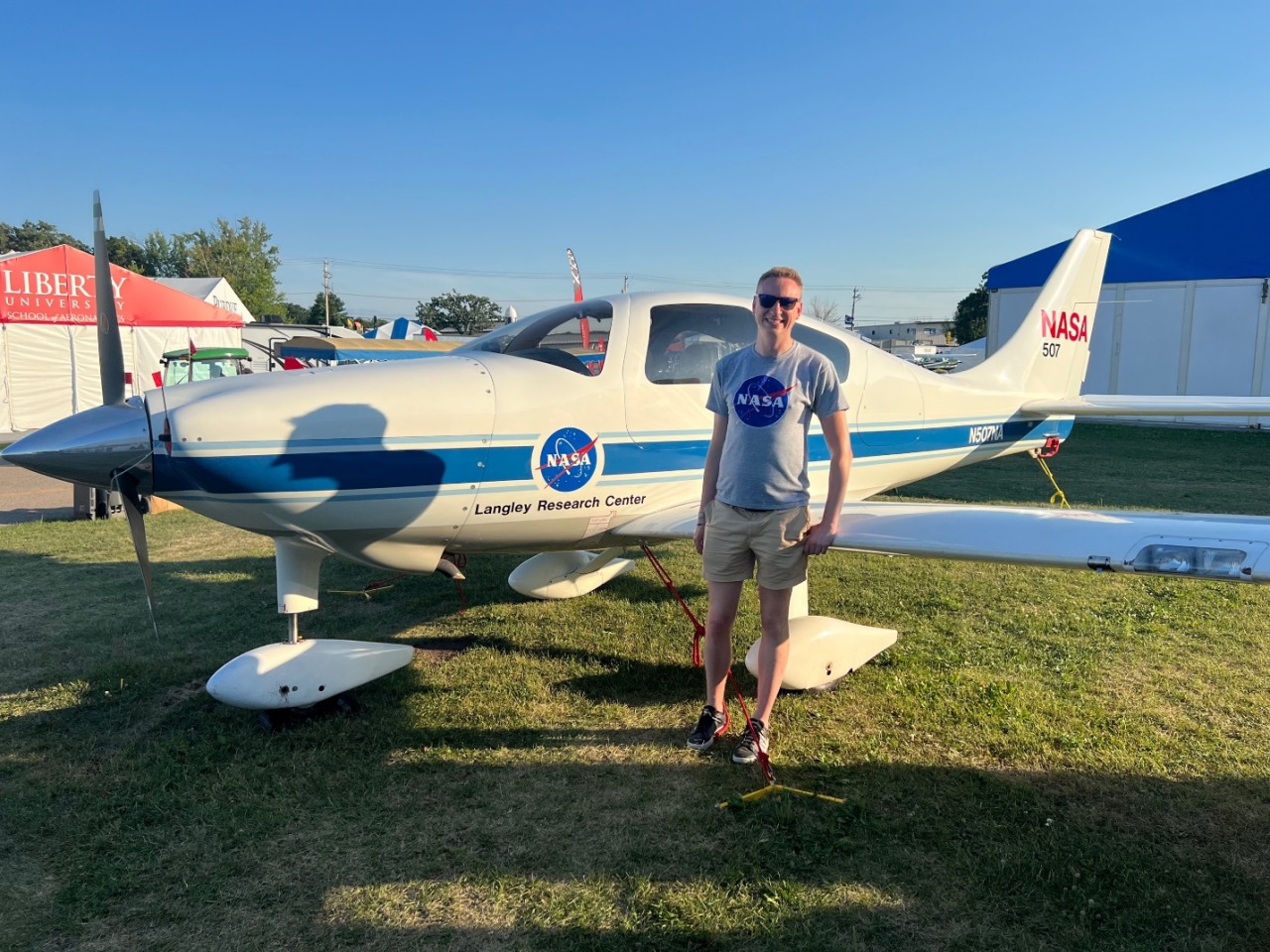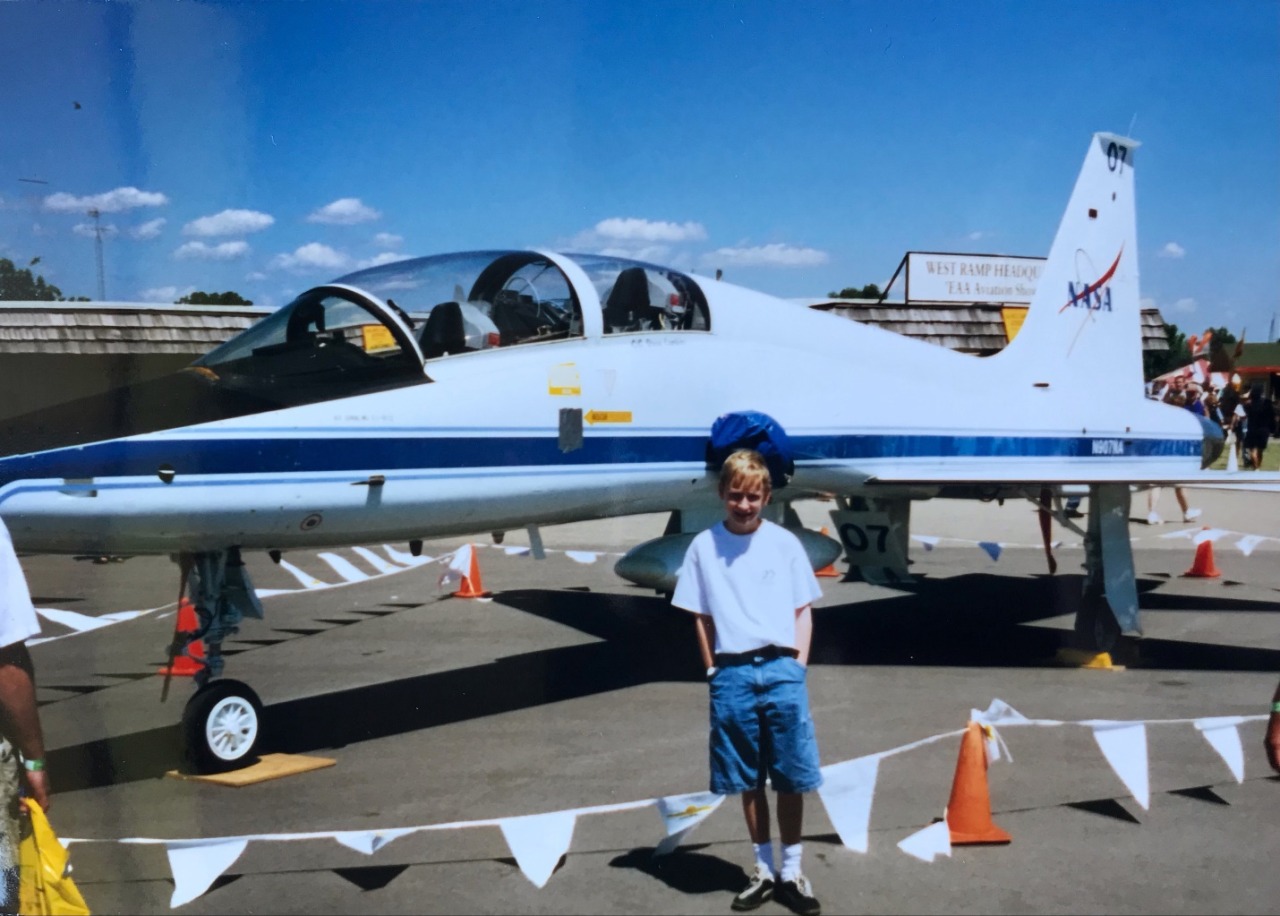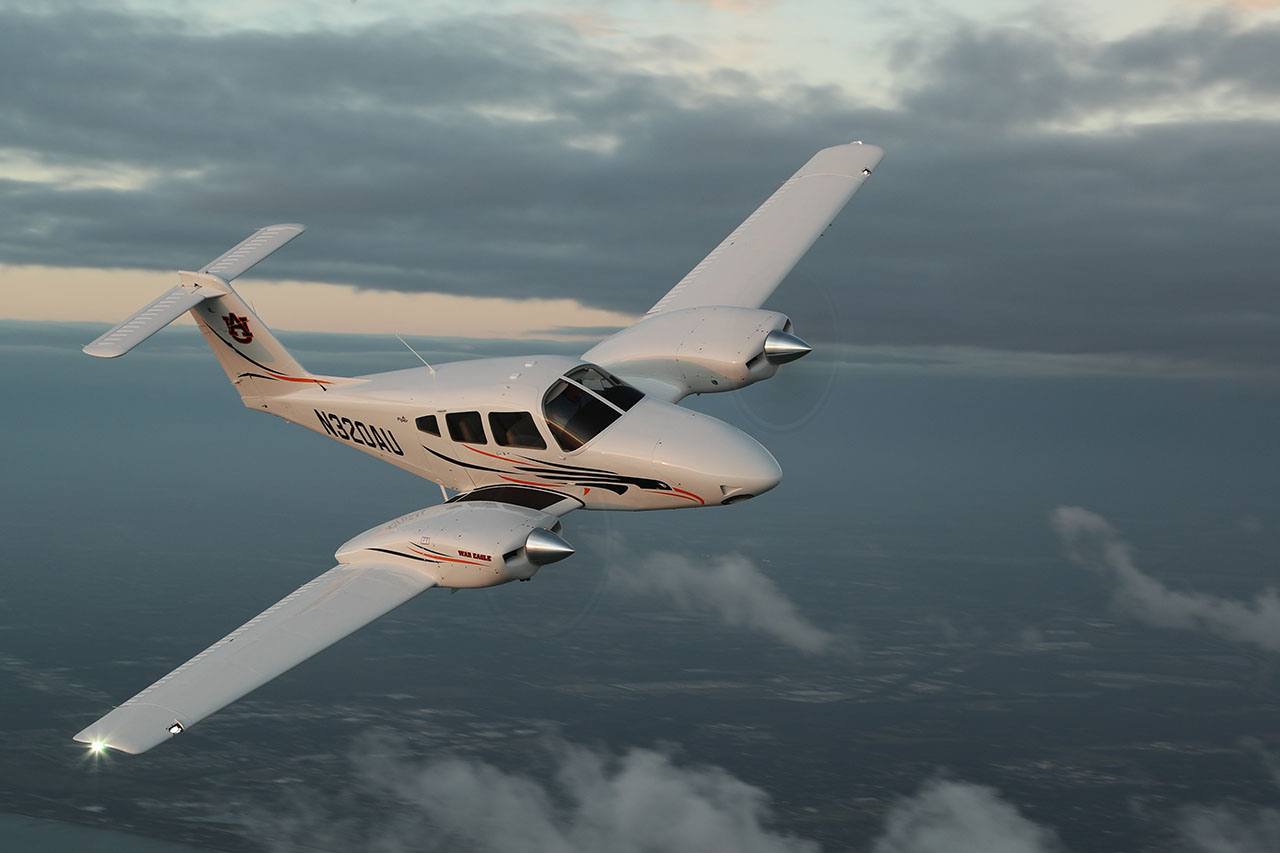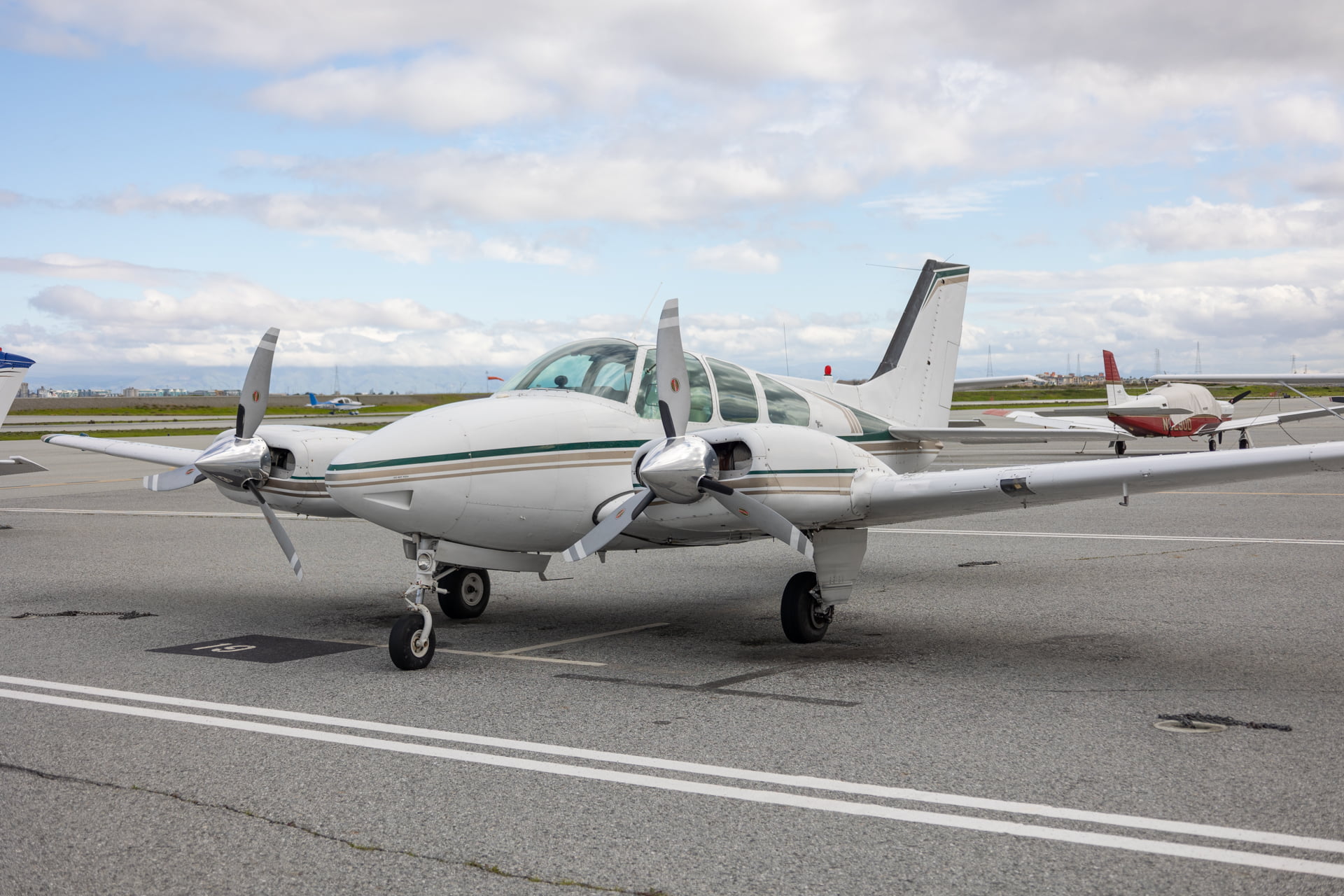Canards Aircraft - The designer of the plane, Richard Hogan, was born in 1956 in Fort Worth, Texas. His aviation passion ignited early, as he watched Air Force jets fly from the nearby base. He built paper planes and sketched futuristic-looking cars and aircraft.
At 12, his grandfather told him his eyes weren't good enough to be a pilot, suggesting instead a career in aircraft design. During high school, he developed the outlines of a cool-looking "personal commuter" plane that would be his lifelong dream.
Canards Aircraft

Hogan trained as an aeronautical engineer but told Plane & Pilot in a 2016 story that when he graduated at the end of the Vietnam War, "there were 10 aeronautical engineers for every job. I became a structural engineer but always stayed close to the aviation field and waited until I had the opportunity to get back into it.”
The aircraft was alternating 20 degrees of bank left and right, while slowly, shallowly climbing ahead. Hogan transmitted on the radio, “Calhoun traffic, two five—two five seven alpha romeo—re-returning to three—runway three five—will be in the, uhh, downwind for three five.
Calhoun.” He started a left turn, banking about 45 degrees. With the plane now maybe 300-400 feet above the ground, the turn continued to the downwind. The throttle was still set to full power, but the climb stopped.
The fluctuations in roll reduced, but the pitch oscillations were unceasing. The pilot's head hit the headliner a few times. An oil pressure audible warning was heard. The wild ride continued. Another pitch down, the pilot's head again hitting the headliner.
He reduced power slightly, but it was too late. The plane impacted a field close to the airport. A: You get the AeroCanard, a new four-place canard kit plane. The AeroCanard prototype flew to Oshkosh '95 in primer, but even before that the company had delivered 18 kits.
Jeff Russell, AeroCad's founder, says the new kit plane resembles the Cozy Mark IV, with changes made for the sake of roominess, convenience, and performance. However, construction methods and build time--an estimated 1,200 to 1,500 hours--the AeroCanard bears an uncanny resemblance to a Velocity.
Plane and Pilot builds on more than 50 years of serving pilots and owners of aircraft with the goal of empowering our readers to improve their knowledge and enthusiasm for aviation. Plane and Pilot expands upon the vast base of knowledge and experience from aviation's most reputable influencers to inspire, educate, entertain and inform.
Theoretical advantages of reducing total wetted surface area and duplicate lift by sharing downward balancing forces between the foreplane and tailplane are opposed in practice by the additional complexity. It's an intriguing concept but requires complicated aerodynamic analysis.
Commuter Craft often touted the stall-resistant advantages of the distinctive canard along with performance efficiencies and a predicted slow approach speed. The Innovator had no flaps on the main wing, but the canard had a movable trailing edge surface used for takeoff and landing.
At first glance, the AeroCanard is indistinguishable from a stock Cozy MKIV. Look closer, though and you'll see some key differences. Inside the cockpit, the front seat offers 2 inches more headroom and 2 inches more headroom width.

In the back seat--where the Cozy tends to live up to its name--the AeroCanard is 3.5 inches wider 2 inches taller and has a whopping 7 inches more headroom width. In addition the brakes and rudder pedals are adjustable on both sides not just the right side.
If the company had survived, the plane's design might have grown even more complex over time. Hogan's plans for the Innovator included foldable wings and a roadable version, also known as a flying car. Based on impressive projected (but never proven) performance claims, Commuter Craft took 59 orders and grew to a dozen employees, with plans for an 82,000-square-foot factory.
An additional option AeroCad offers for its kit is an electric lift to replace the manual nose gear mechanism. "This lets you board the plane nose-down, then raise the gear electrically," says Russell. "That makes a big difference with a plane this heavy."
Velocity attacked this problem another way by selling an option called "the Elite" which adds gullwing doors to both sides adding complexity and $3,000 to their kit. Another departure from the Cozy design is the option of installing the canopy as a wraparound windshield rather than a
full bubble. Ship2 was disassembled, trucked to the factory and underwent three weeks of modifications. We know new, larger and redesigned canards were added. The nose steering cam lock and the ailerons were worked on. The power plant's thrust angle was adjusted by adding shims to the lower motor mounts, changing the angle by 3 degrees.
AeroCad's new best-of-both worlds means you can start a Cozy plans built kit and finish it with as many AeroCanard molded parts from us as you want. Convert a Cozy MKIV per plans model using AeroCanard larger parts which now makes it look like an AeroCanard, this gives more headroom than the standard Cozy.
Or build a kit by completely using molded parts and our modified plans, paying for them one sub kit at a time (16 sub kits) with no increase in price. With more options, AeroCad, Inc. hopes to see a higher percentage of airplanes completed with less money out of customer's pocket, especially at one time.
Ship2 first flew on Feb. 26, 2019, and that flight almost ended in disaster. The contracted pilot told the National Transportation Safety Board (NTSB) that "as soon as I came off the ground, the plane went into a wild oscillation of both pitch and roll.
I ran out of elevator up trim within the first few seconds of that flight and then had a lot of control pressure involved to keep it flying around the pattern.” Details are scarce, as the single onboard camera lost its charge mid-flight, and the aircraft apparently wasn't equipped with a lot of test instrumentation.
Outside the cockpit, AeroCad has replaced the standard manual speed brake with an electrically actuated brake. The wheels and brakes are beefier--15x6.00-6 instead of 5x5.00--giving the AeroCanard roughly twice the stopping power! AeroCad offers for its kits an electric nose lift to replace the manual nose gear mechanism.
"This lets you board the plane nose-down, then raise the gear electrically. Inside the cockpit, the front seat offers 2 inches more headroom and 2 inches more headroom width. In the back seat – the AeroCanard is 3.5 inches wider 2 inches taller and has a whopping 7 inches more headroom width than similar Cozy MKIV aircraft.

Saturday, March 23, 2019, at the Tom B. David Field (KCZL), in Calhoun, Georgia, was an ideal day for flying. Sunshine, 71 degrees, clear skies with high, thin cirrus, unrestricted visibility, wind down the runway at 3 knots.
But there was no test pilot. Hogan still looked unwell. Several people were told testing that day would be limited to taxiing. Is the same as the FG model, but has a newer SX top fuselage change only;
that offers an additional 3 inches of shoulder room on each side of the front seat, and 1.5 inches more head room. There were concerns with the workmanship. The NTSB docket contains claims that during taxi tests, the rudder pedals on the right side failed, and on another occasion, the control stick broke off.
One pilot/A&P IA mechanic at the airport told the NTSB he noticed "a significant amount of improperly installed hardware...nuts that did not have the required exposed thread beyond the locking feature of the fastener and some fasteners with more than three washers to take up
the extra shank on the bolts.” He discussed his concerns with Commuter Craft employees and warned two pilots who were considering flying the Innovator that he "did not believe it was a safe aircraft for many reasons."
As weight came off the nose gear, the pilot said the rudders became mechanically locked. He "bumped off the elevator stop at least three times. I don't know how many times during that flight the aircraft departed straight and level flight, all uncommanded;
however, I would guess it to be around a dozen times. At one point, I considered bailing out.” With a reduction in engine power, he found the plane more controllable and quickly returned for a landing.
The flight lasted 11 minutes. After the accident, the Safety Board found no evidence of pre-impact issues with the engine. Momentary drops in oil pressure were recorded during the negative g accelerations, but power remained normal.
Damage to the airplane was too severe to make judgments about the exact aerodynamic or control issues. On Saturday, March 23, 2019, a new airplane type was destroyed on its second test flight. Immediately after takeoff, the two-seater suffered pitch and roll oscillations.
It climbed about 400 feet, then, still fluctuating in pitch and roll, crashed in a nearby field, killing the pilot, who was also the plane's designer. Because it was a one-off aircraft, and an unusual one, at that, definitive aerodynamic or engineering answers are hard to establish.
But the larger takeaways aren't. Because of its many design similarities to the Cozy, it's worth noting that the AeroCanard was being produced under a licensing agreement with Nat Puffer of Co-z Development Corp. In fact, AeroCad is also offering a kit version of the standard Cozy Mk1V design, now called the AeroCanard SB (Small Body).
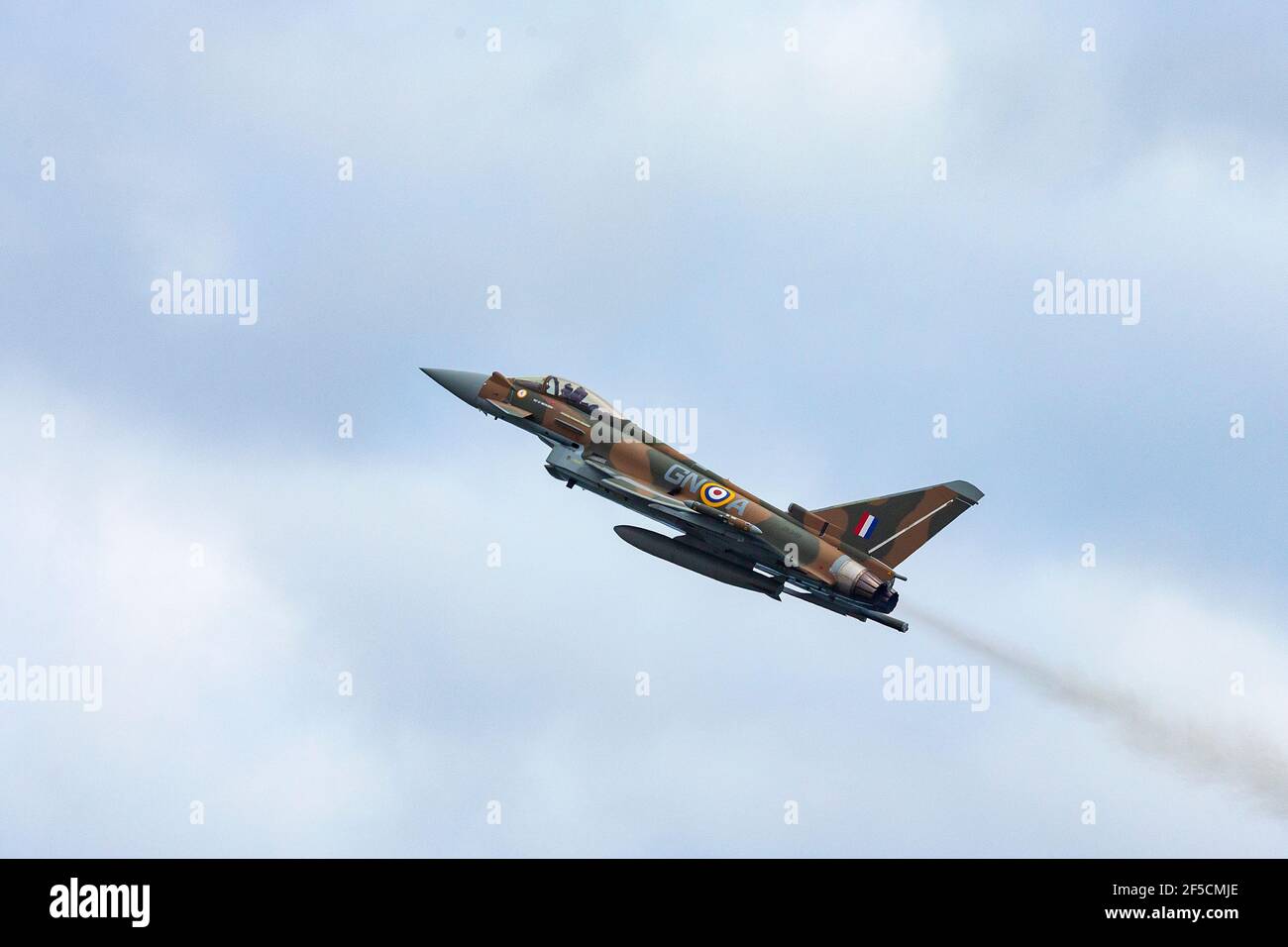
Like the AeroCanard FG the SB kit is available either as a complete kit or as 16 separate sub kits. The SB can also be purchased with or without the raw material. It's nearly $2,000 less than the AeroCanard FG kit.
The reason says Russell, is that the SB kit includes fewer molded parts, and the fuselage top is not as fully prefabricated. Still Russell figures the SB kit should save a Cozy or SB builder 1,000 plus hours, and at a cost that's not much higher than the scratch-build version."
AeroCad and the Russell's are not newcomers to the composite homebuilt scene. The company has been prefabbing molded parts and subassemblies for Long-EZs, Cozys, Berkuts, E-racers and other composite planes for the past 6 years. AeroCad has also been working at Sun-N-Fun and Oshkosh Workshops for the past several years to show homebuilders how to get higher quality components from vacuum bagging and different finishing techniques.
Maybe the most striking design choice was making the Innovator a three-surface aircraft; it had canard, wing and tailplane. Most aircraft have two surfaces generating lift, the familiar wing and horizontal tail configuration. The tail surface provides a stabilizing balance force as well as an angle of attack control.
Taxi tests continued, and the plane readied for its second flight. A Commuter Craft executive assistant told the NTSB, "Hogan was under an extreme amount of pressure from the investor to have the plane flying before the Sun 'n Fun Expo."
That show was only about a week away. The investor had texted that failure to fly meant "you will receive not another dime from me. Better get on the phone now and get Alpha builders to make their deposits.
Figure out who you will fire. I initially anticipated spending [$1–$1.5 M] to get the plane flying, NOT $4M. It seemed like a good bet given the orders you have in hand, if they are real.
Your order book has been stagnant due to NO RESULTS. I have little hope of ever seeing my money again.” As for Russell, he's one of the few people around who has built both a Velocity RG and a Cozy.
His Cozy took plans built champion at Oshkosh in 1991. 'What's more, Russell and his business partner--his father Greg, a former Rockwell engineer--came close to buying Velocity from Dan Maher a few years back. So it's not surprising that when it came time to scale up to a complete kit plane, AeroCad's design would incorporate features of both designs.
"We've really tried to combine the best of both," Russell says, "and so far our builders seem to think we've succeeded." The long-awaited second plane, internally called Ship2, was a pre-serial kit production model (kit production not to be confused with FAA Part 23 production).
Three feet longer than the original prototype, Ship2 put the seats ahead of the wing. The original forward-hinged bubble canopy made it hard for people to get in and out of the cockpit, so it was replaced by large butterfly doors hinged on the A-pillar.
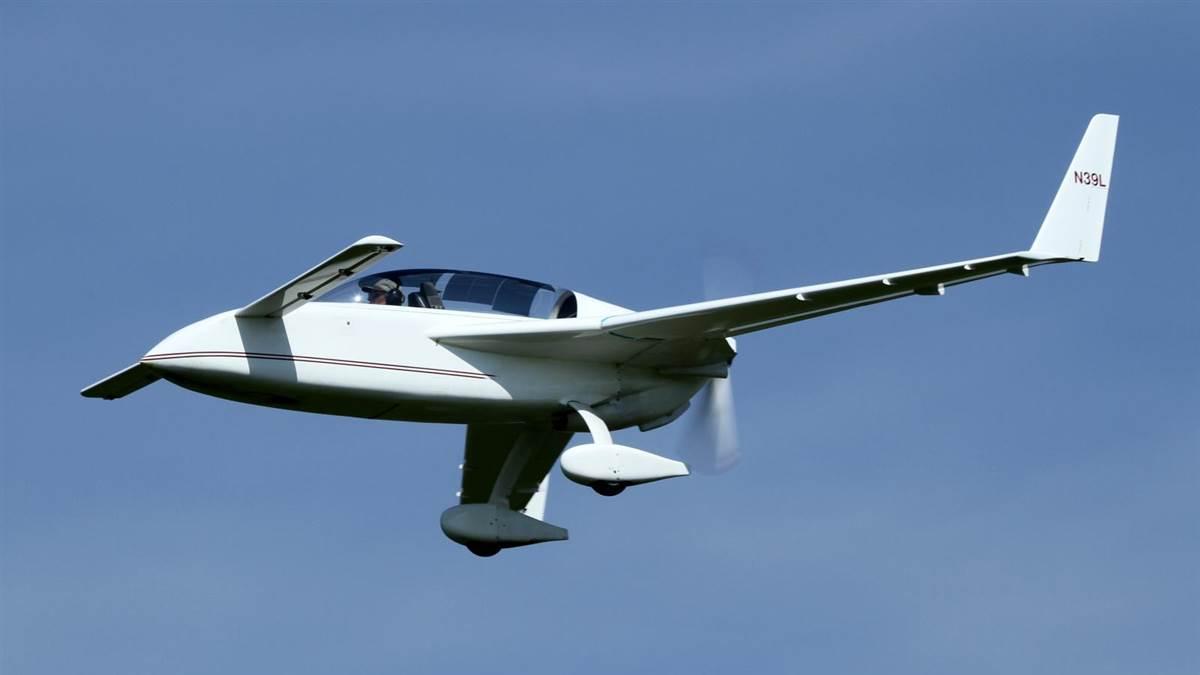
Conventional control sticks replaced the small side-sticks used in the prototype. The main landing gear struts attached to the fuselage rather than the wings. The horizontal stabilizer was set lower on the twin booms. The AeroCanard manufactured by AeroCad, Inc.
is a fast and efficient 4 seat canard type aircraft with a Lycoming LIO360 engine. It has a 1000-mile range and typically cruises at over 200 mph on less than 10 gallons per hour. The AeroCanard kit plane is also available as a plans build aircraft that gives you the option of building either the SB (Standard Body) or the larger FG (Fixed Gear) model, and buying as few or many pre-fab fiberglass kit parts as you
want to help reduce the building time. The SX or (Supersize) model is a top fuselage change only that provides additional head and shoulder room, and the RG (Retractable Gear) model is available as an aftermarket option that can be added to all AeroCanard models.
Commuter Craft did not have a test pilot on staff. As schedule pressures and weather delays increased, two employees counseled Hogan away from doing the flying himself. He'd never flown in the first prototype. He hadn't held an FAA medical since 1999 nor ever completed a BasicMed course.
His 334 total logged hours show no test pilot training or experience. And he wasn't current, with just a couple of hours aloft back in 2018. Plus, he was getting sick. The page you are looking for no longer exists.
Perhaps you can return back to the homepage and see if you can find what you are looking for. Or, you can try finding it by using the search form below. Some two-surface aircraft have the smaller surface up front, where it's called a canard.
Examples include the Wright Flyer, Beechcraft Starship and Eurofighter Typhoon, among numerous others. Canards produce advantages in aerodynamic efficiency and control during aggressive maneuvering and how the aircraft behaves approaching a stall. A lifting canard is designed to stall before the wing, causing the nose to fall and thereby automatically preventing the wing from ever reaching its stall angle of attack.
After a normal taxi and runup, at 3:32 p.m., Hogan announced over the radio his intent to depart runway 35. Twenty seconds later, full power was applied, and another 20 seconds later, he was airborne. The NTSB has considerable insight into what happened next.
The GoPro HERO7 Black camera filmed the pilot, including the control stick and a partial outside view. A recovered Dynon Avionics SV-HDX1100 cockpit display with internal air data and attitude heading reference system (ADAHRS) recorded attitude, g-load, engine data, airspeed, altitude and alerts.
In 2015, the company flew a proof-of-concept prototype for about 60 hours, visited several airshows, and generated a lot of press interest. Orders were taken, investors found, and employees hired. It was a two-seat single-engine piston plane, with an aft pusher-propeller and twin-boom tail.
Composite construction allowed for some smooth-looking curves. In that same 2016 article, we described the Innovator's "wide and sleek" appearance as "attention-grabbing." Friends said it looked just like the planes Hogan used to draw in high school.

The Commuter Craft Executive Assistant told the NTSB, "Hogan became so stressed that he wasn't sleeping and became sick with a severe cough, head and chest congestion and fever on or around Wednesday." His dream was becoming a nightmare, forcing long days and sleepless nights.
On Friday, he "felt worse" and "spent" some time sleeping in his office." The assistant told Hogan that he "looked [poorly] and needed to get some rest." Hogan confided to her that the test pilot would not be available until after the Sun'n Fun event.
That day, some employees saw Hogan lift off from the runway for a few moments during high-speed taxi tests. Immediately, problems similar to those experienced in the first flight appeared. There were divergences in pitch and roll oscillations.
But this time, it was worse than on the previous flight, rapidly pitching 12 degrees nose up, then 1 degree down. G loads of plus and minus 1 g. A handheld radio on the right-seat shoulder harness floated up every time the nose headed down.
As the amplitude of the pitch phugoid progressively increased, the duration of weightlessness time also increased, with the pilot being lifted out of his seat. The NTSB says the pilot was making "pronounced movements of the control stick" in both pitch and roll axes.
The Safety Board found the probable cause was "the pilot's failure to maintain aircraft control during the airplane's second test flight, which resulted in a collision with terrain." Contributing to the accident was "the pilot allowing external pressures to guide his decision to fly the airplane when he possessed little total flight experience, no recent flight experience, and no experience in the accident airplane or similar airplane."
They found Hogan hadn't held a medical in 20 years, he was feeling sick, the plane had problems on its first flight, and he had no flight-test plan. The NTSB report references FAA Advisory Circular 90-89B, Amateur-Built Aircraft and Ultralight Flight Testing Handbook.
It says, "test flying an aircraft is a critical undertaking, which you should approach with thorough planning, skill, and common sense. The flight-test plan is the heart of all professional flight testing.” Outside the cockpit, AeroCad has replaced the Cozy's manual speed brake with an electrically actuated one.
The wheels and brakes are beefier--6x6.00 instead of 5x5.00--giving the AeroCanard roughly twice the stopping power of the Cozy "At light loading," says Russell. "I can stop in 1,000 feet. Behind the firewall the AeroCanard is designed for a 200-hp Fuel-injected Lycoming, which gives it better takeoff and climb performance.
"At light loading, I can get off the runway in 1,000 feet and climb at 1,700 to 1,900 feet per minute," Russell says, "At gross--2,100 pounds--I can get off in 1,500 feet and climb at 900 to 1,000
feet per minute on the same 95-degree day.
experimental canard aircraft, canard aircraft plans, canard aircraft for sale, canard aircraft kit, twin engine canard aircraft, canard aircraft plans or kits, velocity canard aircraft, canard design aircraft

![Dvids - Images - Texas Air National Guard Aircraft On Display At Camp Mabry [Image 2 Of 2]](https://d1ldvf68ux039x.cloudfront.net/thumbs/photos/2005/6203968/1000w_q95.jpg)
